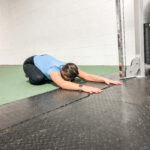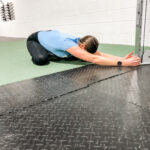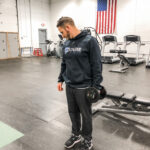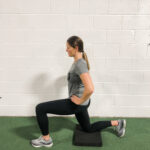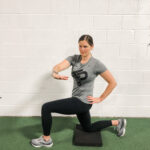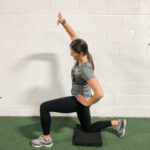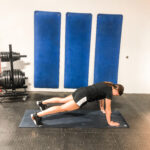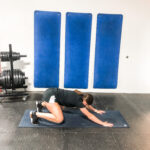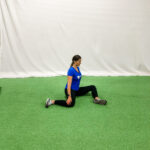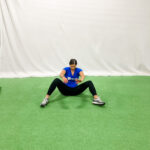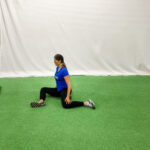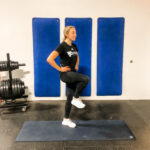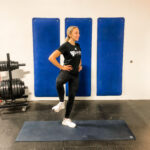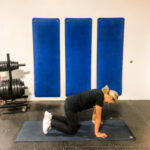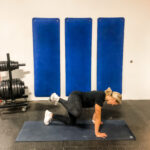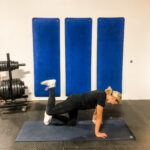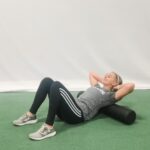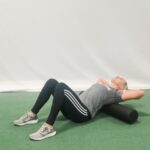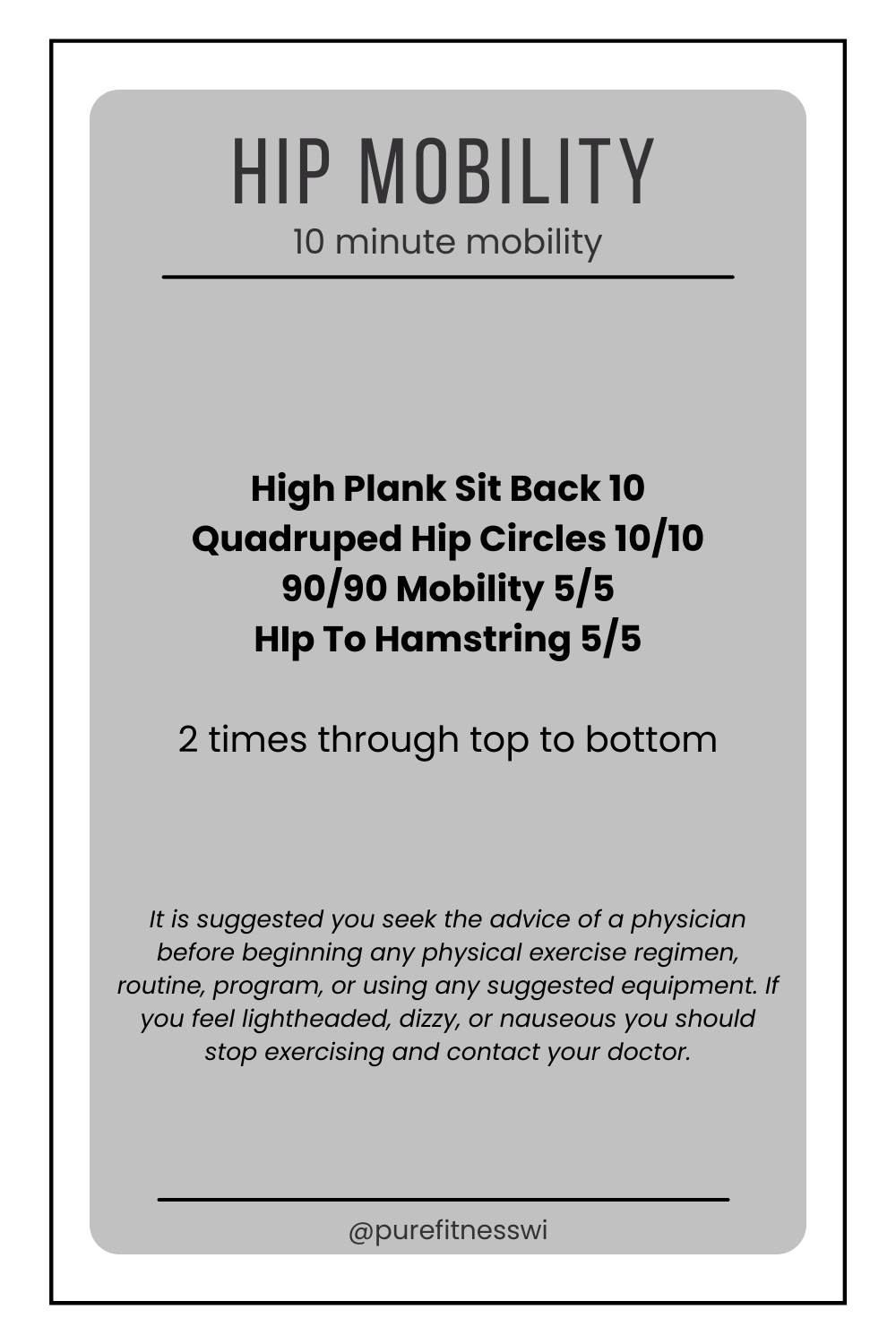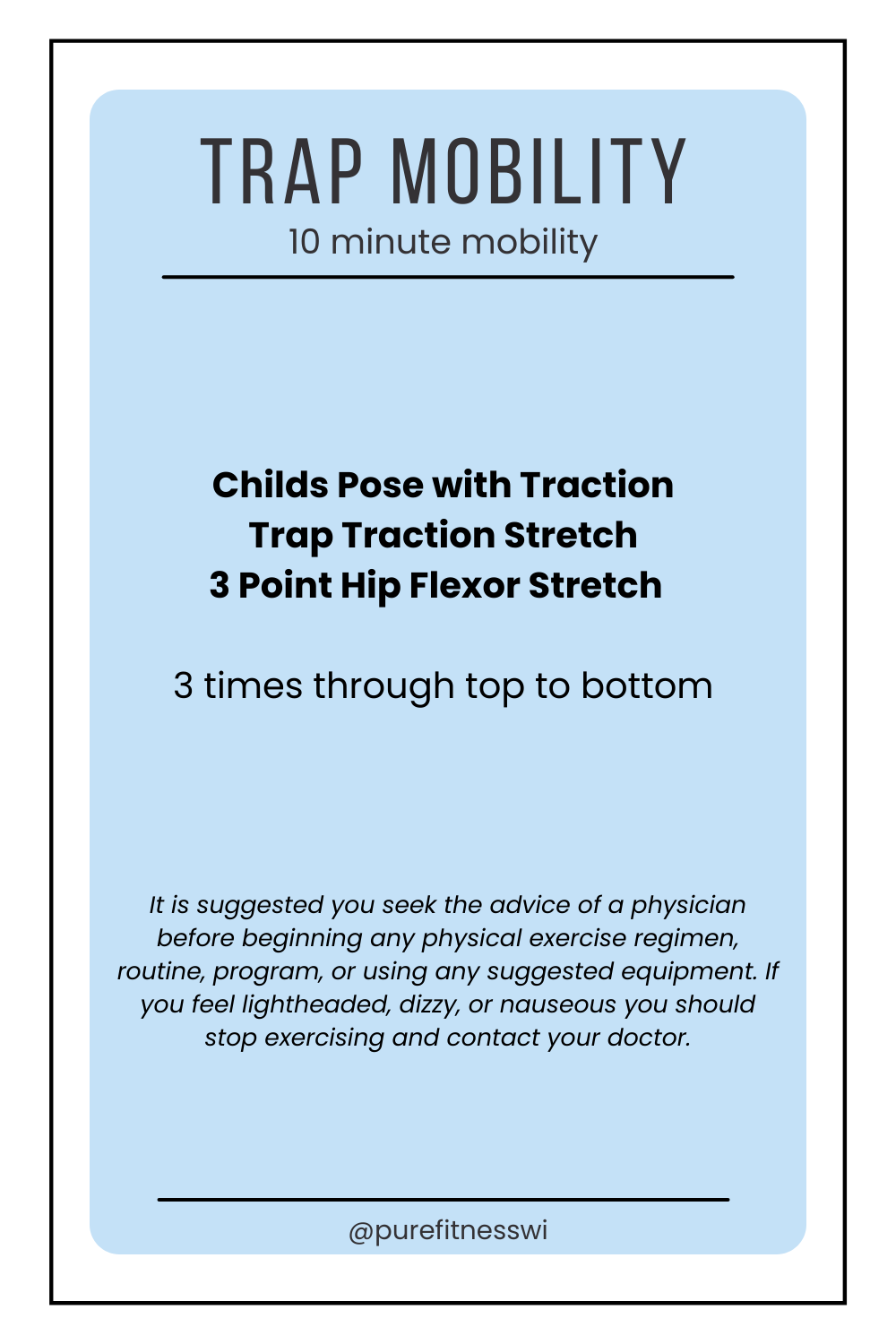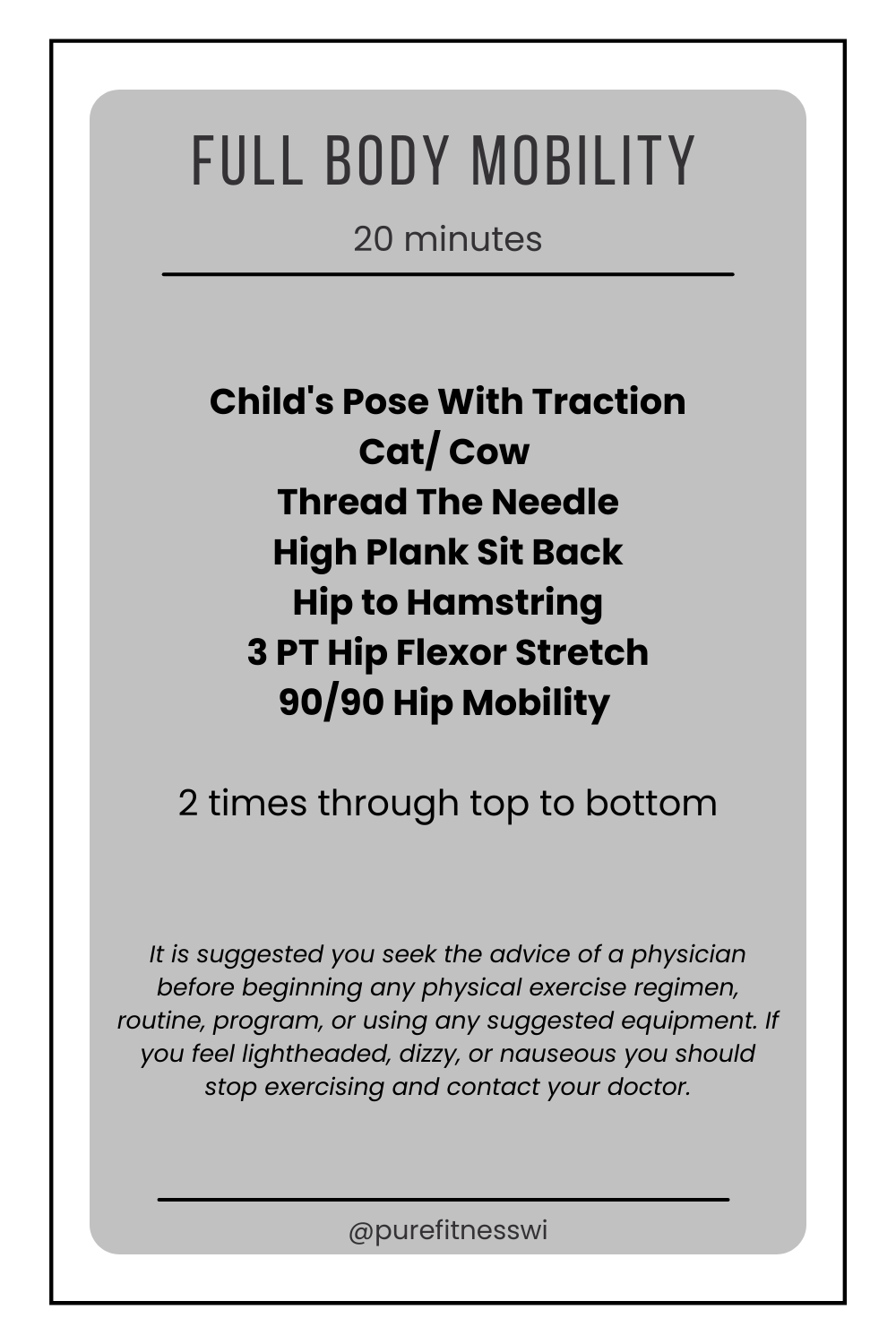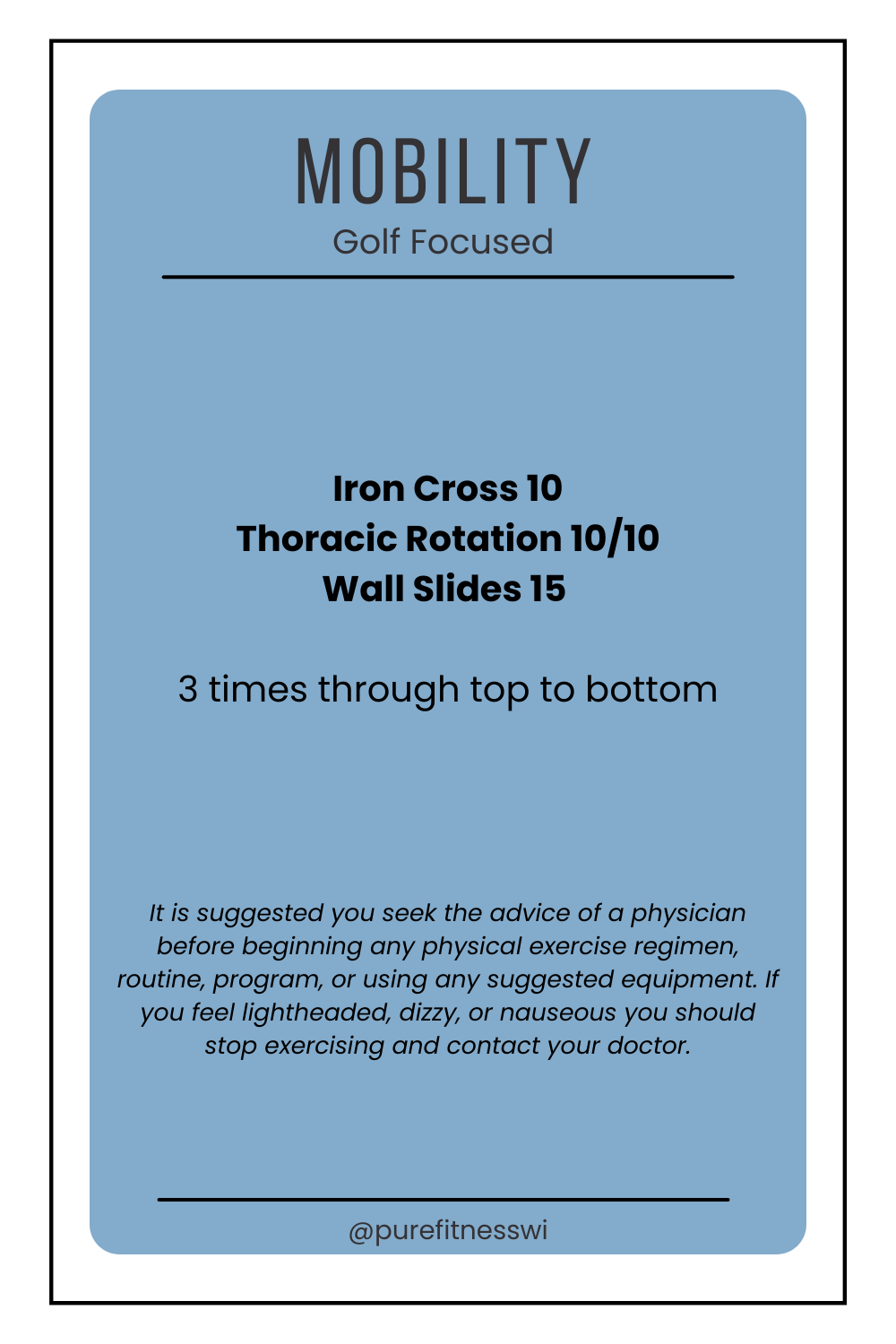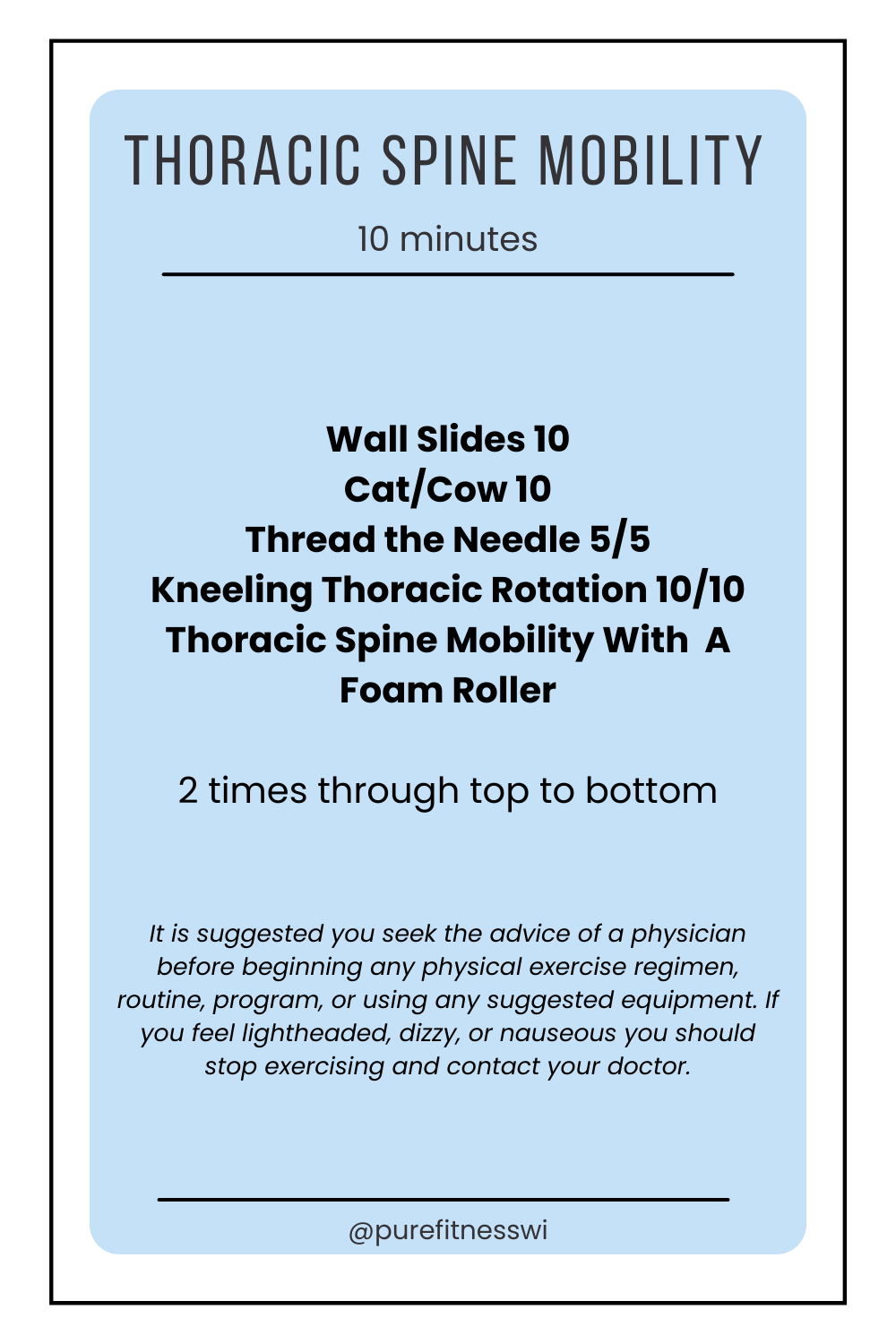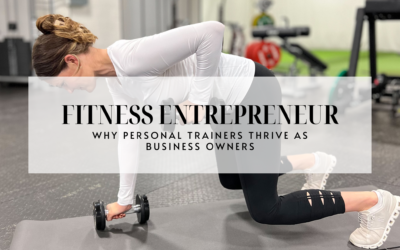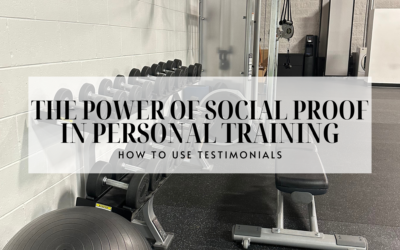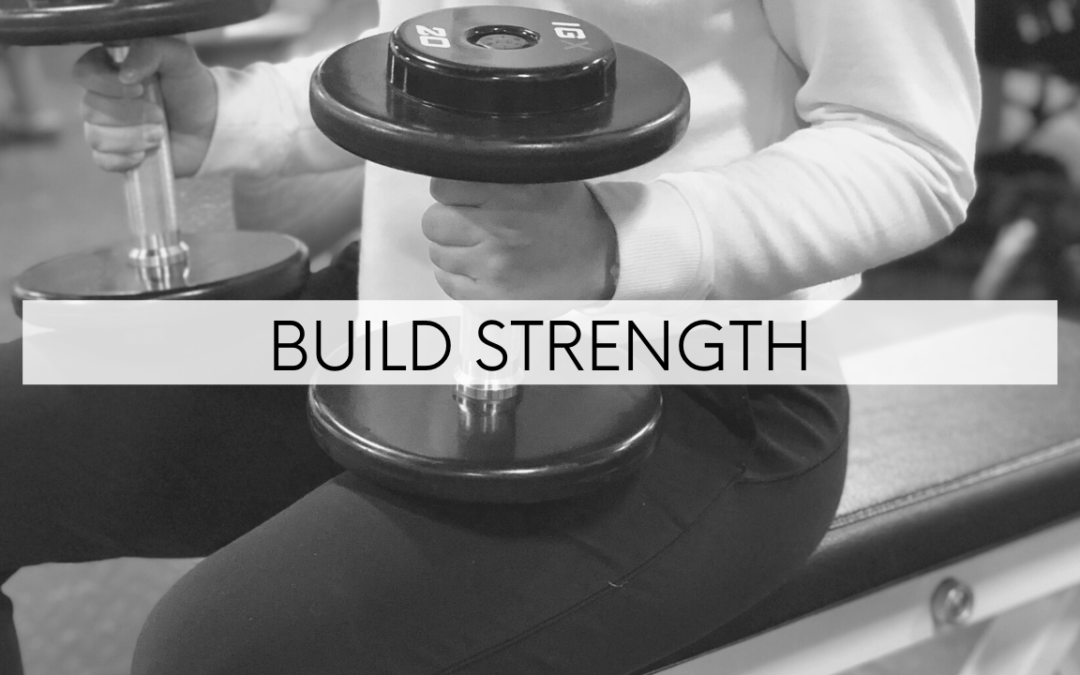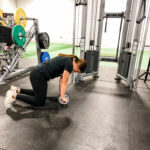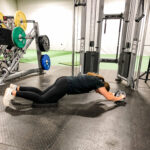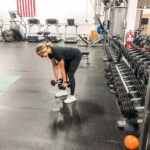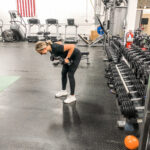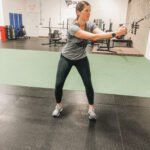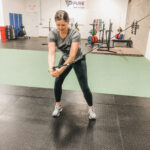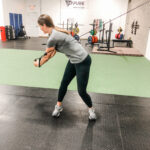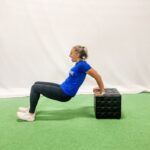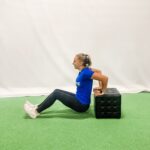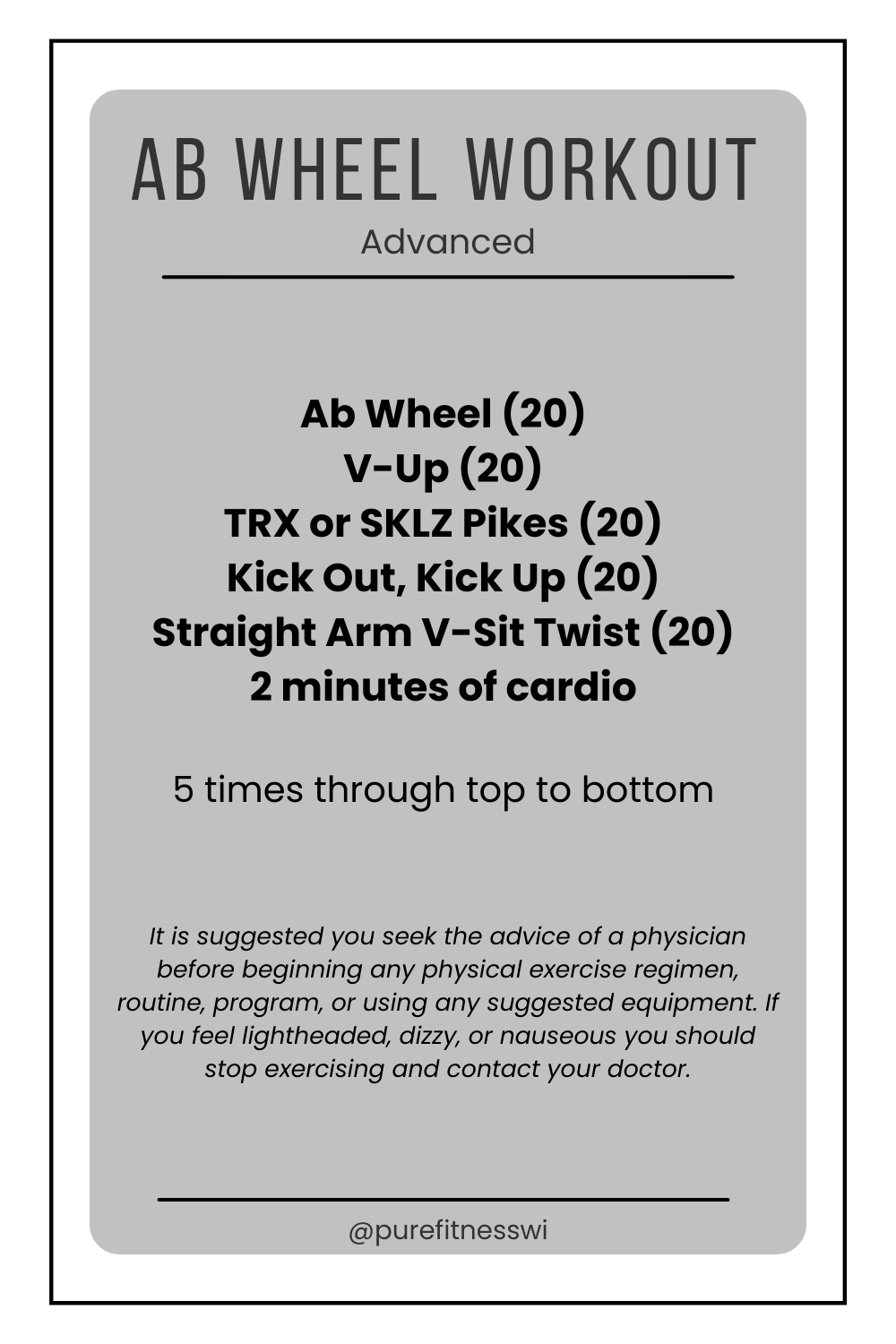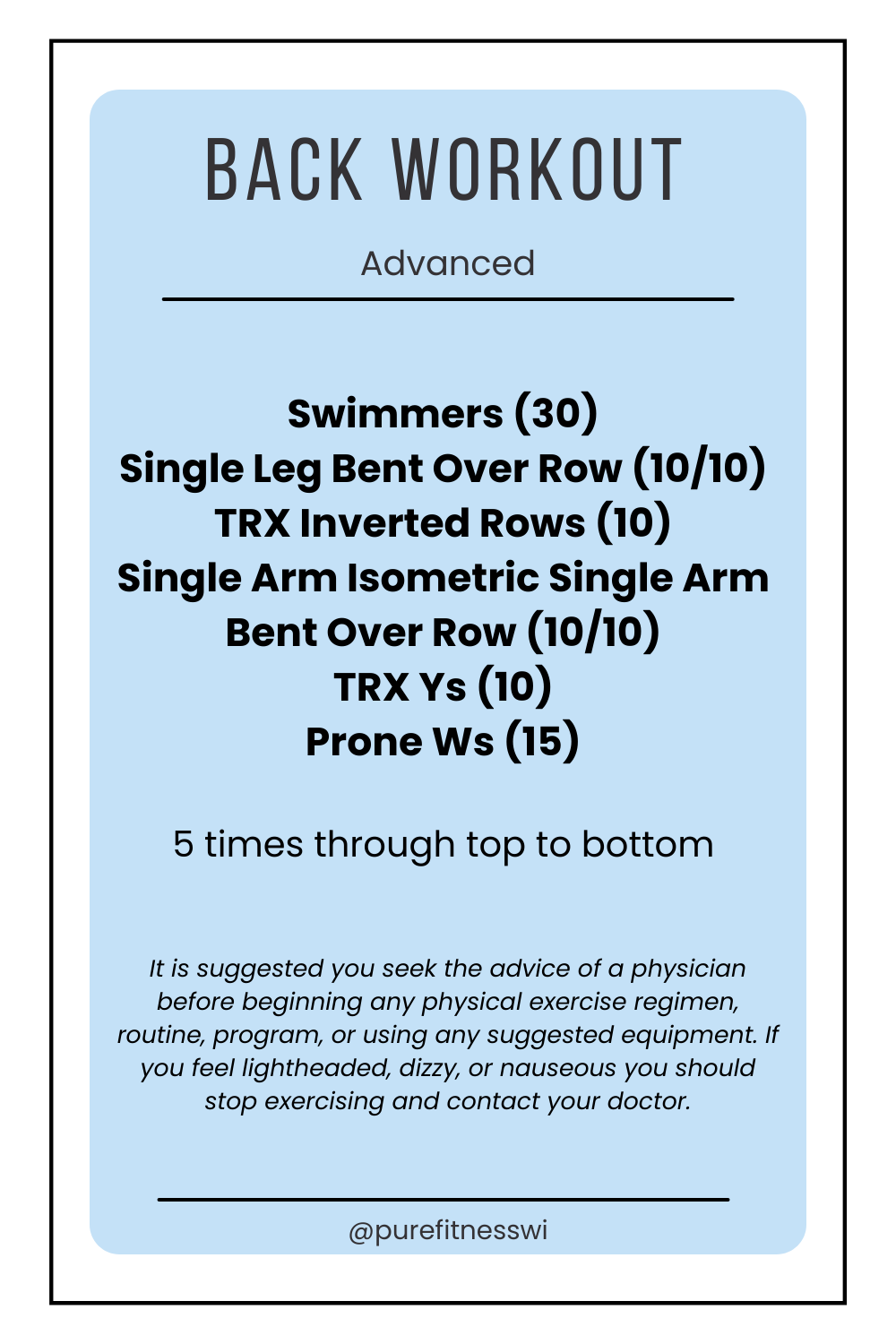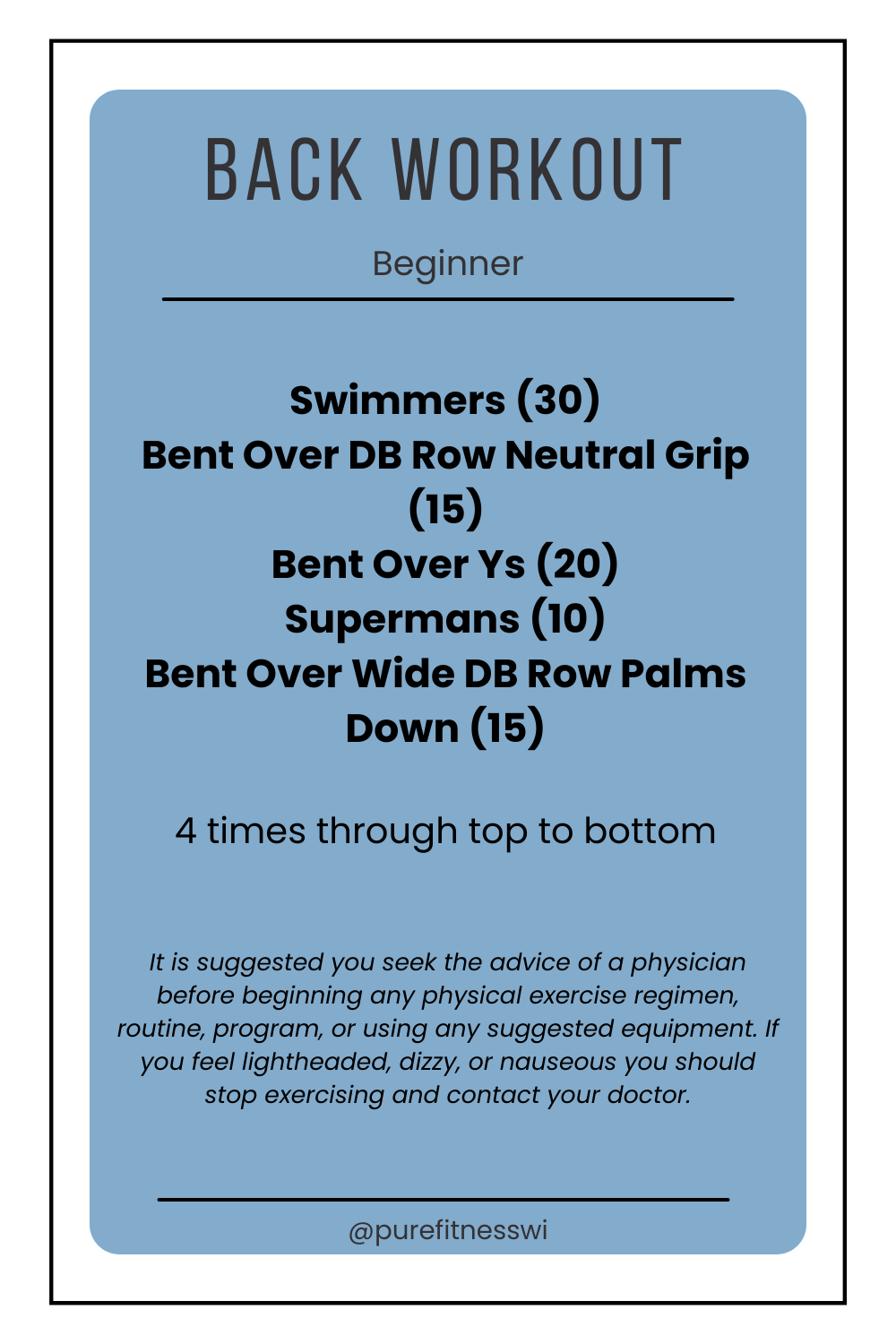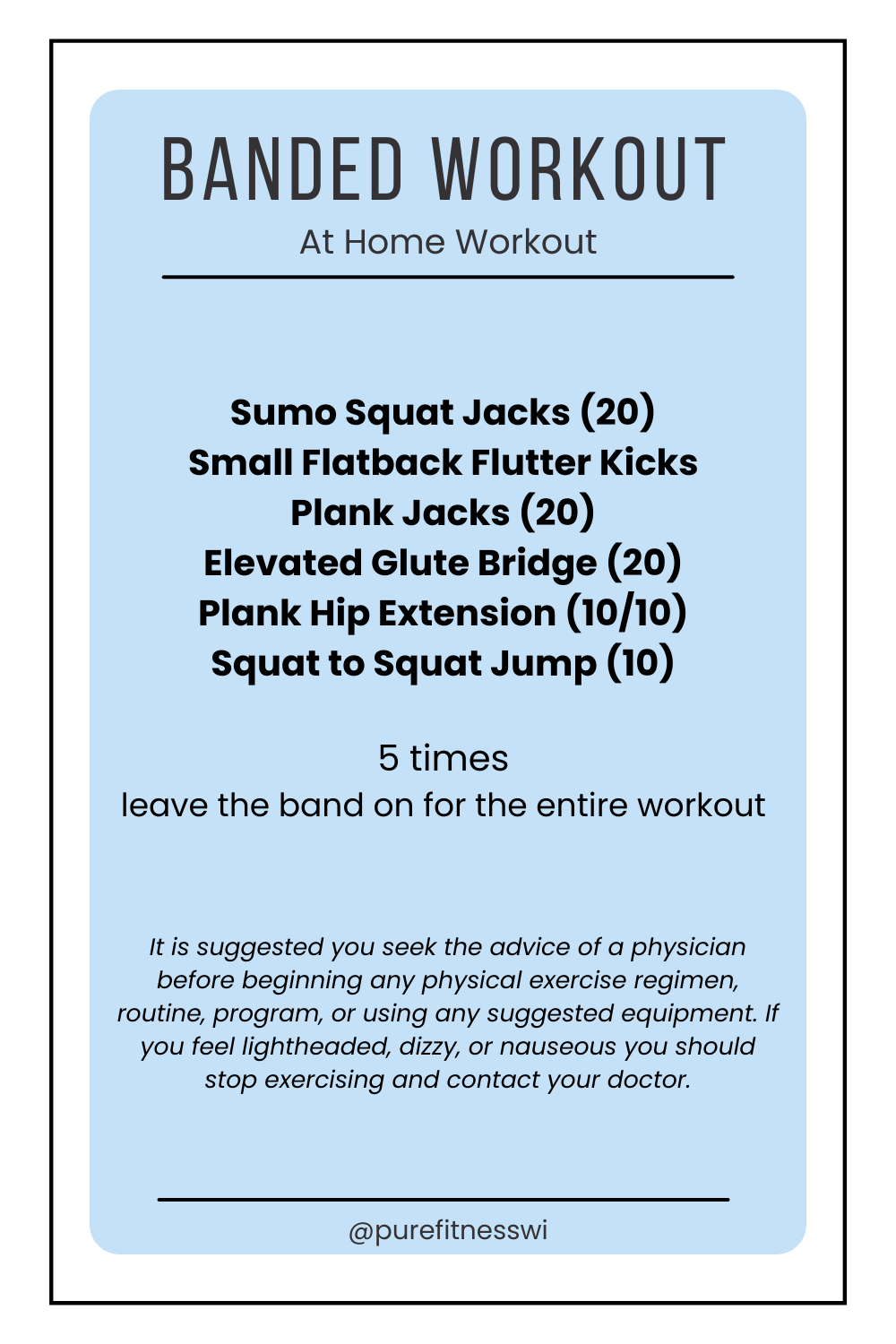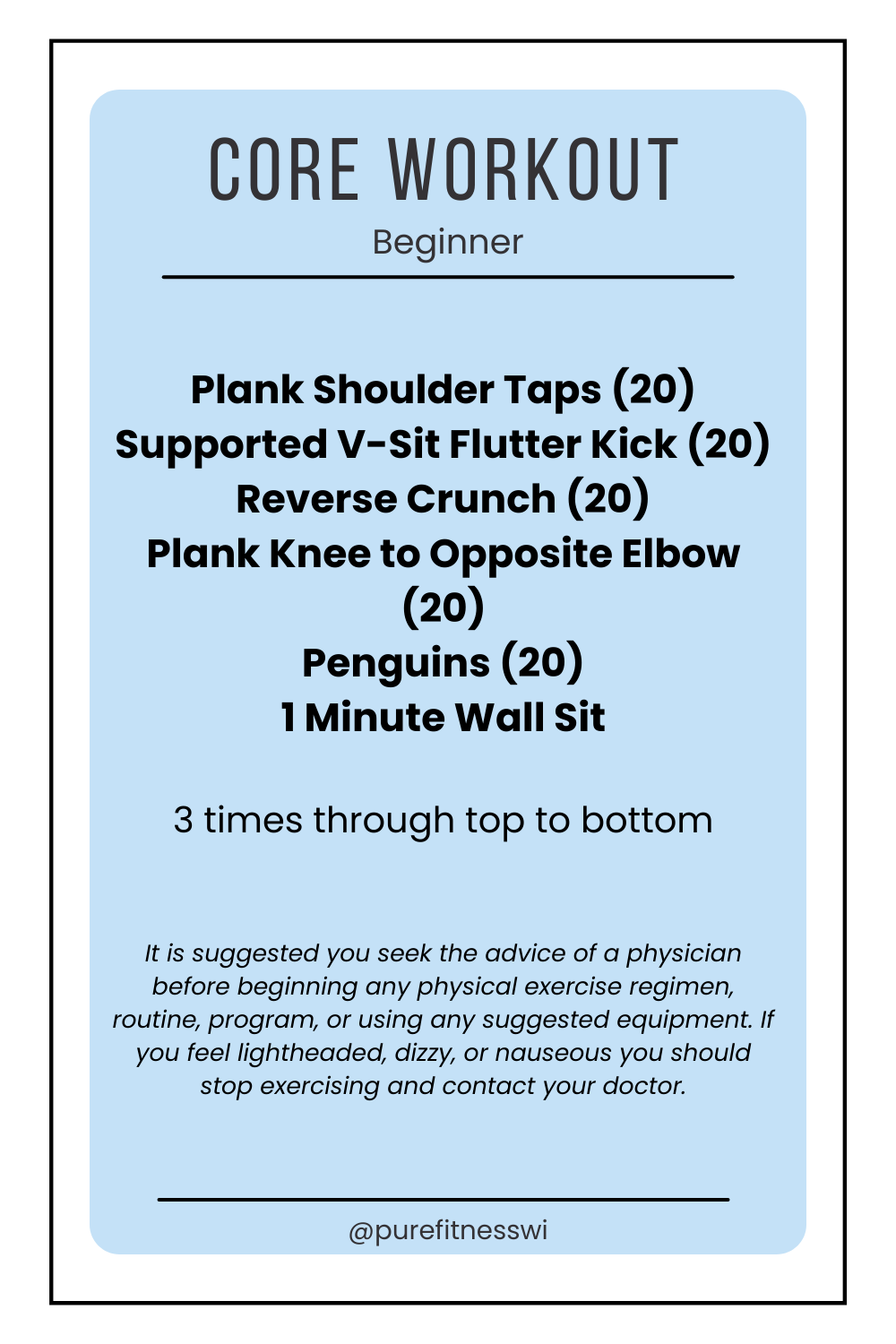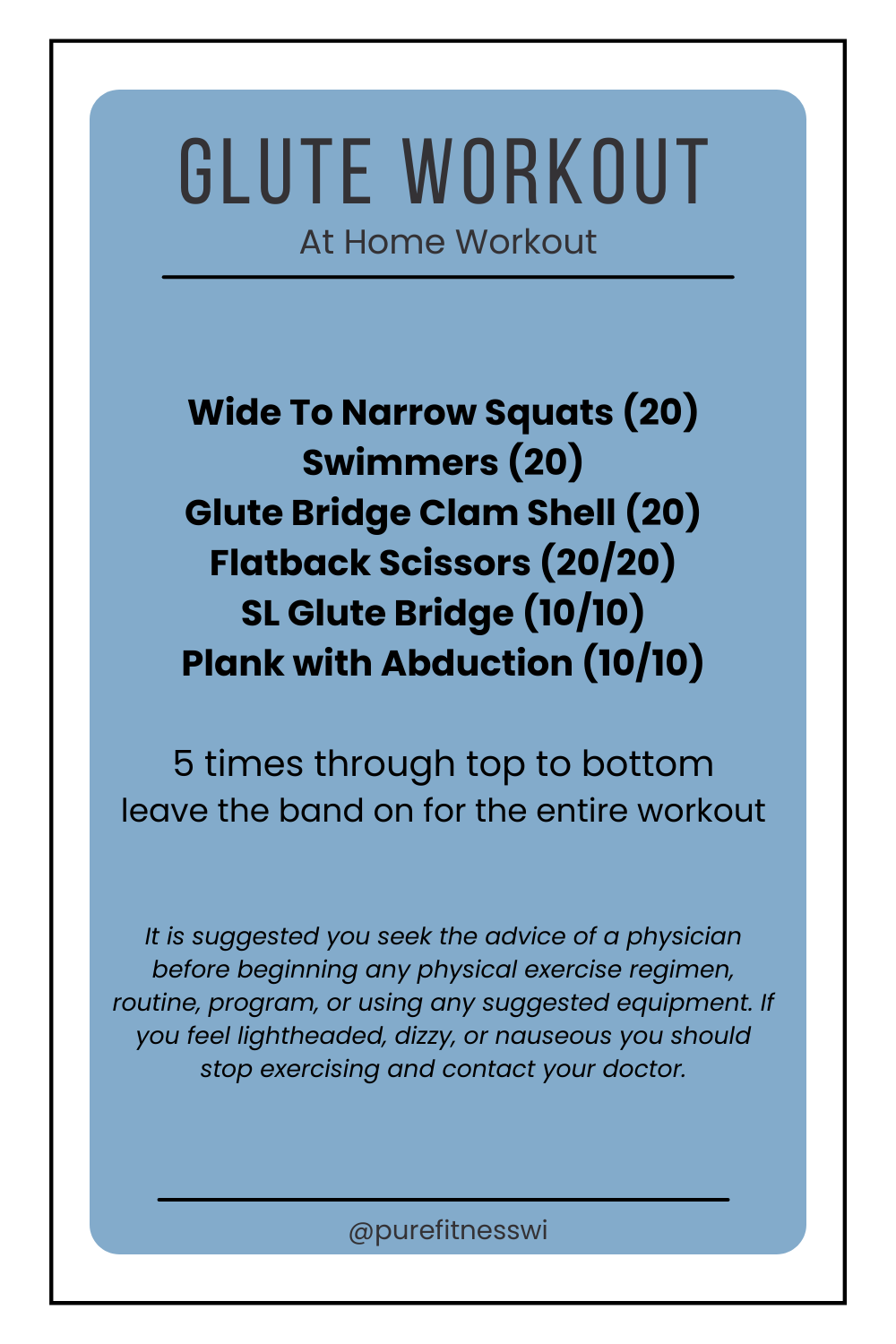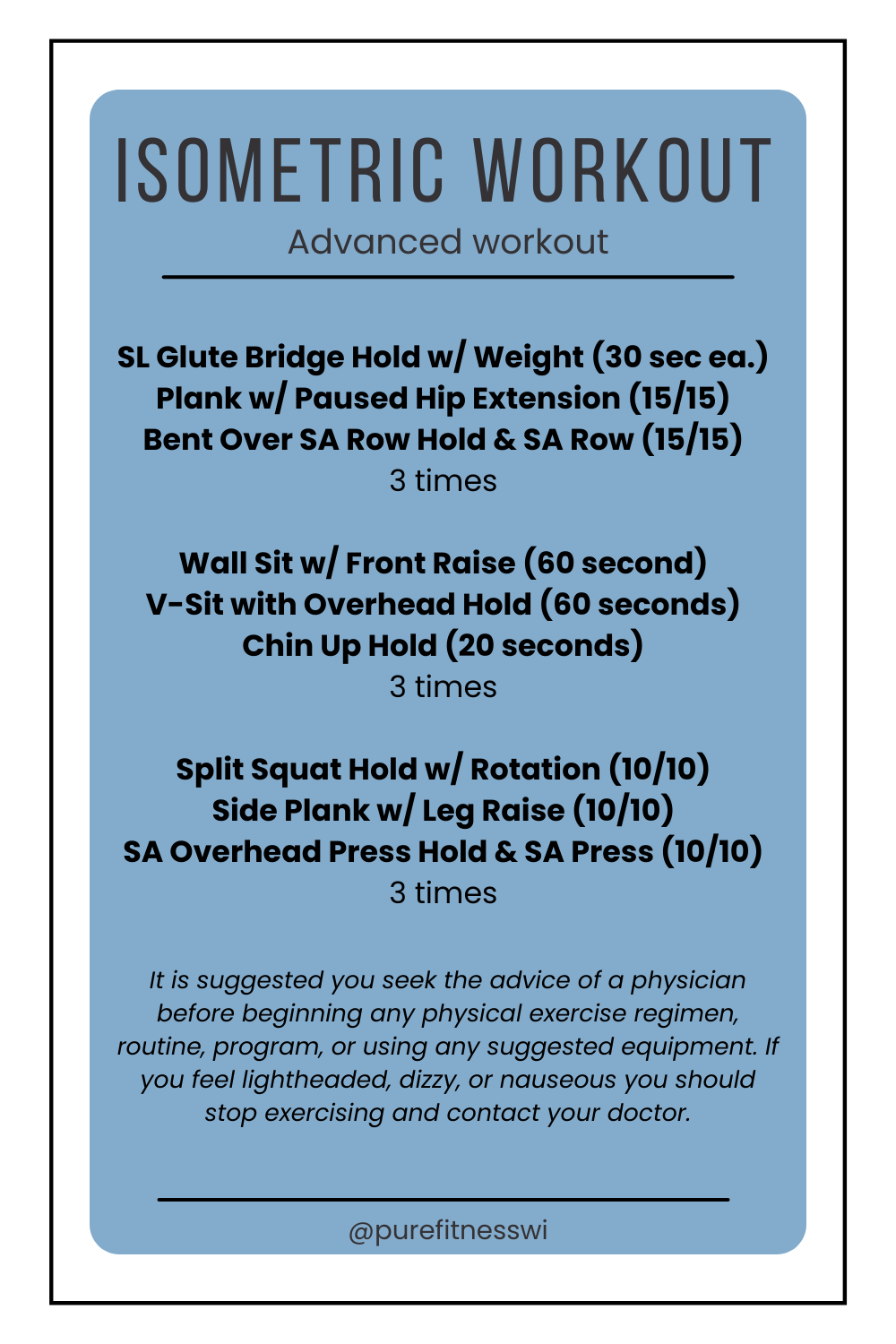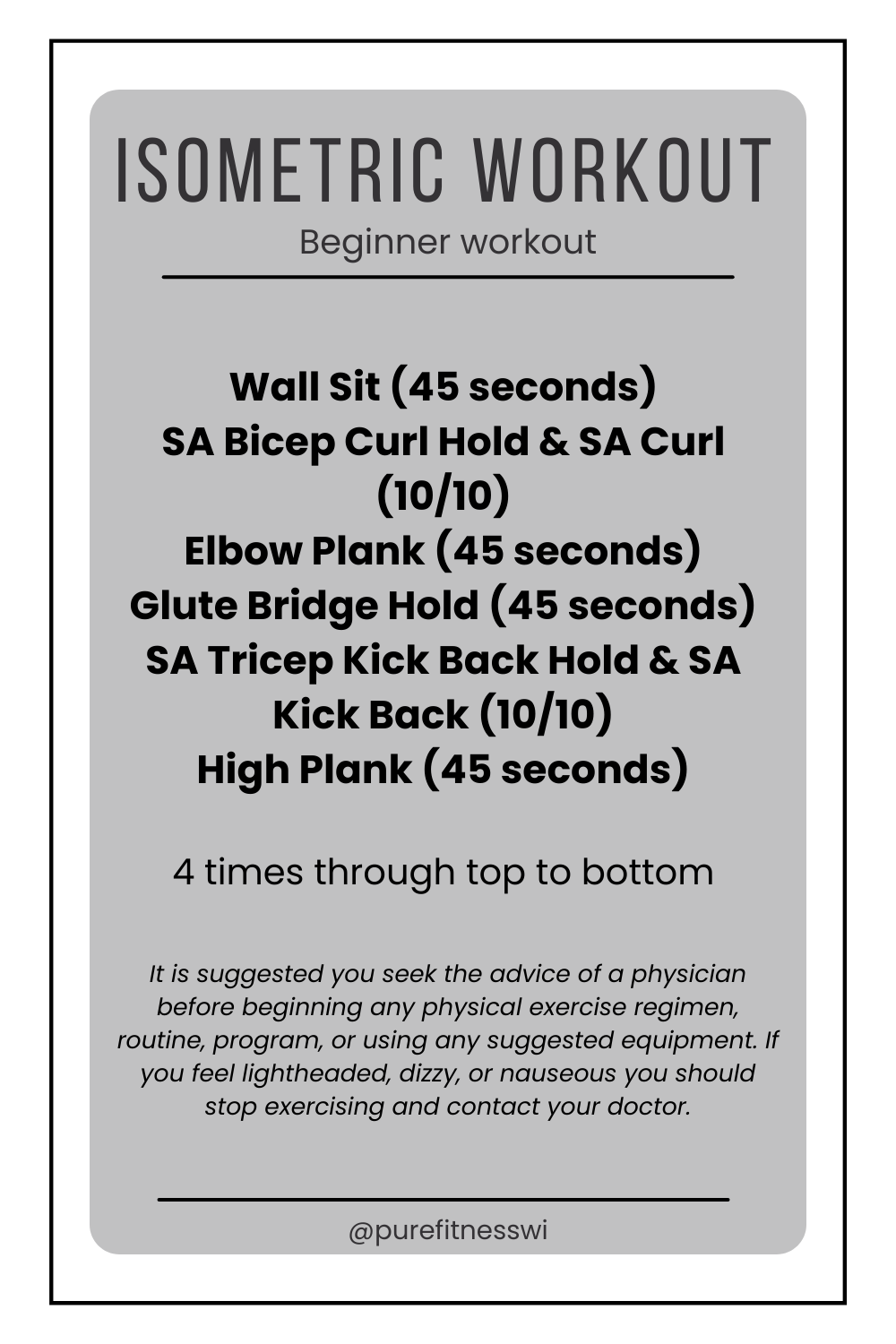As the heartbeat of the fitness world, personal trainers hold a unique power - the power to transform lives, ignite passion, and inspire lasting change. Now, imagine channeling that incredible force into something even more extraordinary - your own fitness business....
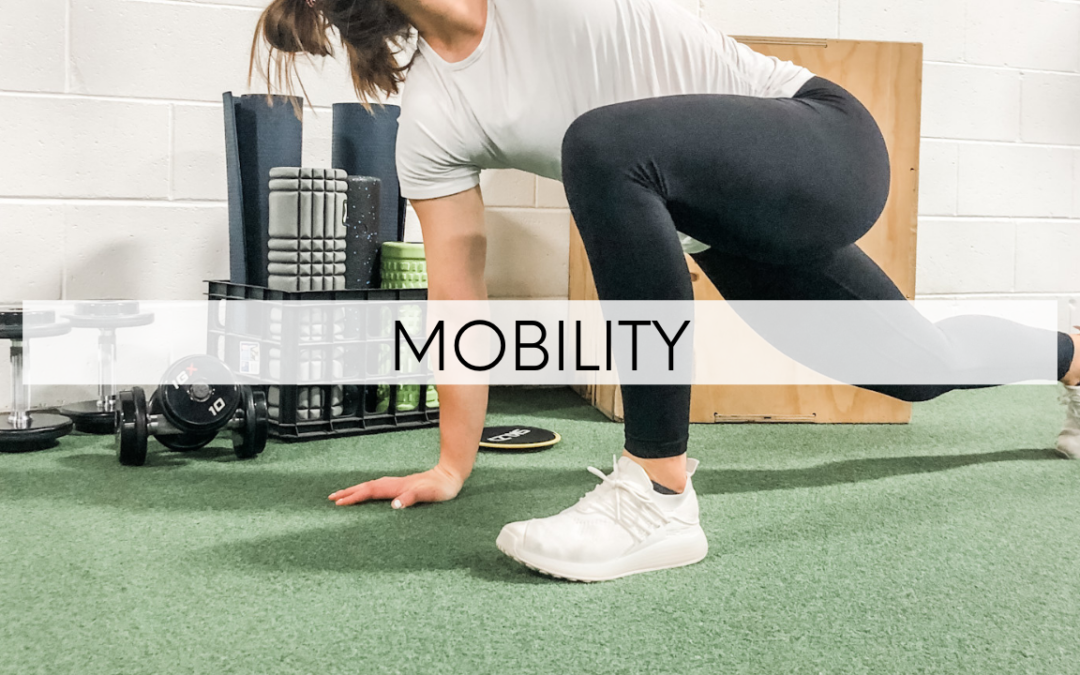
8 Mobility Exercises Anyone Can Do
I highly encourage all my clients to incorporate mobility into their week. Generally leaving when and how much up to them, but these are 8 mobility exercises anyone can do. Read for a full explanation on how and why to do them and find downloadable workouts to follow at the end.
TABLE OF CONTENTS
HOW TO PERFORM CHILD’S POSE WITH TRACTION
Let me be clear here. Adding traction to child’s pose will shift the traditional focus to stretching your lats. If you can’t even get into child’s pose I would not suggest using this stretch for your lats.
Your lats are the largest back muscle you have. They run the length of your entire back and they are used in so many movements from throwing to pull-ups. Taking care of your lats like you do your glutes and lower body will help your posture and daily comfort.
To really target your lats using a child’s pose with traction you need to make two changes:
- Once in child’s pose bring both your hands across to one side and grab a stable object.
- Allow your hips to fall to the side as you bring your hands across.
Making these two changes to a traditional child’s pose will create traction and elongate your lat. Read the full steps below and as always be sure to stay in a pain free range of motion. And since we are doing mobility do not hold the end position for long. Simply work into your end range of motion then back to start and repeat.
STEPS FOR A CHILD’S POSE WITH TRACTION
- Start in child’s pose, see the first picture below, with an object on your left that you can hold on to create traction.
- Walking your hands to the left and grab the object.
- Once you have a firm grasp of the object allow your hips to fall to the right increasing the lengthening of the lat muscle.
- Hold for a few moments, return to start and repeat.
WHAT TO AVOID
You should never be in pain. Please stop ANY mobility you are doing if pain exists. Our bodies are designed to try and prevent injury. That doesn’t mean that we can never get hurt. Rather that we should listen to our bodies.
Our muscles consist of muscle fibers in which every fiber has a muscle spindle. The muscle spindle’s only job is to detect and regulate the lengthening of muscles. When we are doing mobility, or pushing the range of motion, we are lengthening the muscle. If we push, intentionally or unintentionally, to a point of pain the muscle spindle will be activated to PREVENT the lengthening from occurring. This is the opposite of why we want.
HOW TO PERFORM A TRAP TRACTION
Your traps, or Trapezius muscles, are one of several back muscles. This muscles is named after it shape, a trapezoid. And it is quite large, running from the base of the head, out to the clavicle and shoulder and down the spine. Our traps help tilt, turn and stabilize at the head. They also are involved in shrugging your shoulders, stabilizing the shoulders and twisting the arms.
Basically you are using your traps all day. And there are other factors that impact your traps. Like sleep. If you are like me you like to sleep on their side, giving themselves a hug and pulling their shoulders (shrugging) up to the ears. Basically increasing the tension in my traps while I sleep, go me! I go to sleep to recover, not make things worse.
And then there is stress. If you haven’t heard, your shoulders are a very common place to “carry stress”. Simple put that means, when you are stressed you tend to shrug your shoulders. Putting more tension into those already active traps.
STEPS FOR A TRAP TRACTION
We are using a weight to produce the traction portion of this exercise, but you can just as easily use a counter or desk by grabbing underneath.
- Stand comfortable on two feet with a shoulder width stance with a weight in your left hand.
- Keeping your posture tall, but your shoulder relaxed, slowly turn your head to the right and tuck your chin towards your armpit.
- Find your end range of motion, hold for a few moments and return to start. Repeat this movement varying your chin location.
WHAT TO AVOID
- Pain. As always, mobility should be pain free. Control the stretch by bringing your head into a more upright position.
- Shrugging Shoulders. This is the opposite of what you want here. So try to relax those shoulders to get the most out of this stretch.
TIPS FOR A TRAP TRACTION
- You don’t need a ton of weight, but if all you have at your disposal is a 5 pound weight you are better off using a table/counter/railing. Anything that you can get your hand under to provide a base for the pulling force.
- Try working your chin from your midline out towards your armpit. There might be more than one spot that needs stretching.
HOW TO PERFORM A 3 POINT HIP FLEXOR EXERCISE
This is a variation you can take on a traditional hip flexor mobility exercise. It is by no means the only variation you can take, but you bet your bottom dollar it feels fantastic early in the morning or at the end of the day.
We commonly say “my hip flexor” is tight or “you have tight hips”, but this can be misleading. When we talk about hip flexion it is the act of bending at your hip to bring your knee towards your chest or lower your chest towards your legs. But the hip is a very dynamic joint, allowing for a very large range of motion. For example abduction at the hip with flexion will put your knee out to the side and up toward your chest.
All of this is to say that hip flexion can occur in various movement patterns, which means various hip muscles will be active. And those muscles attach at various points on your pelvis, spine and femur. So when we work to relieve “tight hips” or “a tight hip flexor” moving in various ranges of motion can be helpful.
STEPS FOR A 3 POINT HIP FLEXOR EXERCISE
- Start in a split kneeling position. I suggest having something soft, like a stability pad, to kneel on.
- Tilt your pelvis under and squeeze your glutes.
- Keeping your glutes tight you lean forward then return to starting position. Point 1
- Reach overhead sideways towards the forward knee then return to starting position. Point 2
- Rotate towards the front knee. Point 3. (See pictures below.)
- All 3 movements combine to make the 3 point hip flexor exercise. Perform 5 reps on each side.
WHAT TO AVOID
- Arching or extension in your low or mid back. Allowing yourself to arch or extend will produce a range of motion we are not looking for. We want the movement (of the range of motion) to be from the hip. I remind my clients to keep their core braced to serve as a reminder for a neutral posture.
TIPS FOR A 3 POINT HIP FLEXOR EXERCISE
- Focus on tilting your pelvis and engaging your glutes. This will help increase the stretch at your hip flexor by pushing your hip into extension. You must maintain this posture with movement.
- It is likely one movement is tighter than the other(s). Consider adding in a few extra reps in that pattern regularly.
HOW TO PERFORM A HIGH PLANK SIT BACK
With so many mobility exercises “on the market” it is hard to know why you should or shouldn’t do one. Unfortunately, without knowing your health history it is hard to know what is right or wrong for you. However, I can tell you some great reasons for doing the high plank to sit back. And if any of those reasons hits home with you, then give it ago by following the steps below. Just make sure to read the section on what to avoid.
Hip & shoulder mobility together – a nice benefit to save time and work functionally. However, this may be a drawback for you if you experience shoulder pain or limited range of motion.
Warm-up & core activation – we know that a plank requires us to use our core, so a high PLANK to sit back will be no different. Doing these will help wake up your core and warm your body to be ready for more challenging movements.
Decrease low back pain – hip mobility is linked to decrease low back pain, but so is core strengthening. Two birds, one stone. You can’t really go wrong there.
STEPS FOR A HIGH PLANK SIT BACK
- Start in a high plank with your feet shoulder width apart.
- Push through your hands, bend your knees and sink into yours hips as you “sit back”. This should mirror child’s pose in yoga, except elevated off the ground.
- Once you have reached your maximal “sit back” push through your toes, straighten your legs and move back to a high plank position.
- Repeat for desired reps. I recommend sets of 10 for a warm-up, sets of 5 for active recovery
WHAT TO AVOID
- Be sure not to let your low back arch or your hips sag as you bring your body back into a high plank position. Keeping your core engaged the entire time will help prevent any low back arch.
- Pain. We are always avoiding any pain or high level discomfort. Remember that there are a large variety of hip mobility exercises out there. You can certainly find another.
TIPS FOR A HIGH PLANK SIT BACK
- This is a great warm-up exercise, but it can also be incorporated into a workout by adding a movement between reps. For example, a push-up between sit backs or step your feet in and stand-up between each rep.
- If you have wrist discomfort when in a high plank consider using dumbbells (hex style are easiest) as the base for your hands. This will allow your wrists to stay straight, versus the flexed position they typically in during a high plank.
HOW TO PERFORM A 90/90 EXERCISE
90/90s should be included in your mobility program because they target the hip from multiple angles. Depending on what leg is in front, or your chest is facing, the joint positioning is different. Add in the process of switching from side to side and you are accessing a large range of motion, or trying to at least.
Another unique factor is how you are using your body weight in this mobility exercise. 90/90s use your body weight, and the ground, to help increase the the end range of motion achieved on both sides. This will help to produce quick results in improve mobility.
The key is in the set-up. Starting position should be 90 degrees at knee and hip of your front and back leg. This will be awkward and unusual the first time. If you can’t get into this position try other hip mobility drills consistently and come back to this one.
Mobility is always about quality over quantity. Be calculated in your movements and listen to your body.
STEPS FOR A 90/90
- Start seated on the floor with your knees bent and let both of your legs fall to the same side. This will put the outside of one leg and the inside of the other leg on the floor.
- Adjust your upper legs so the angle between your thigh and your hip is at 90 degrees on the front and the back leg.
- Adjust your lower legs so the angle at your knee is at 90 degrees.
- Once in this position you want to apply force down into the ground from your front and back leg, working towards contact with the ground.
- Lean your chest forward towards the front leg, keeping your back flat.
- Return to to starting position and switch your legs and face the other direction and repeat.
WHAT TO AVOID
- Anything other than 90 degrees at your hip and knee. After all, that is the whole point of the exercise.
- Pain. Mobility or flexibility training should not be painful. Pain is an indicator that you are doing something wrong. Listen to your body.
TIPS FOR A 90/90
- Your mobility will be challenge on each side and in transition. There is a reasonable amount of core work going on here to be able to change your leg position. Keep your upper body quiet and core braced as you go to switch sides.
- On each side try to achieve floor contact from both your front and back leg while you slightly lean forward by hinging at your hips. That means your back stays straight!
- There are a lot of variations of this exercise, but we consider this to be a good starting point. If switching your knees side to side isn’t your jam you can always work the forward lean on each side for a few reps before switching positions.
HOW TO PERFORM A HIP CIRCLE
Hip mobility has a large impact on low back pain. For example, tight hips can cause your posture to change and your low back to hurt. Tight hips can also cause an individual to use poor technique while lifting increasing the odds of a low back injury. Working hip mobility to restore range of motion can minimize low back pain and injury.
Increasing range of motion at the hips is also connected to improved athletic performance. Limited range of motion means your mechanics, loading pattern and ability to work efficiently will be limited as well. Opening up range of motion opens up the opportunity to access more power and translate that power to performance.
Before we jump into the steps decide whether you want to do standing or quadruped hip circles. Does it matter? An argument can be made in both directions, but for this purpose you decide. I favor the quadruped when I am indoors and or doing mobility. I use standing when I am outdoor or getting warmed-up, especially for running.
STEPS FOR A STANDING HIP CIRCLE
- Find your balance on one leg by engaging your core and keeping a soft bend in the knee of the weighted leg.
- Once balanced raise the non-weight knee to 90 degrees.
- Then keeping your foot pointed at the ground rotate your hip open so your knee points to the side.
- Finally rotate your hip so your knee points down to the ground and your foot to the back.
- Bring your knee back up to 90 and follow the same steps.
- Repeat 5 times then reverse the steps, working hip rotation in the opposite direction.
STEPS FOR A QUADRUPED HIP CIRCLE
- Start on all fours, hands and knees, and brace into the ground by driving force through your limbs and engaging your core.
- Lift one knee off the ground and rotate at your hip raising your knee away from your body.
- Rotate your hip again so that your quad is parallel with the ground and your foot is pointing to the sky.
- Bring your knee back down to the ground and follow the same steps.
- Repeat 5 times then reverse the steps, working hip rotation in the opposite direction.
WHAT TO AVOID
We have said it before, but we will say it again … we are focusing on a specific range of motion. The size of the movements does not matter. We do NOT want excessive motion or a flailing body. Isolate the movement at your hip by controlling your torso and upper body.
Your hip joint is a ball and socket, which allows the joint a large range of motion. That range of motion can become limited over time. Enter mobility and flexibility training. While you are doing the exercise think about that ball and socket joint. Envision your leg moving around your hip. The rest of your body should be still or quiet.
TIPS FOR A HIP CIRCLE
- You can use a wall as proprioception to control the rest of your body from moving. Just line up sideways with one shoulder against the wall and maintain contact as you move through the range of motion.
- When you are in the quadruped position it will prevent too much rocking side to side which will help control your range of motion.
- Standing it will prevent the side bend from occurring in order to move your leg.
- Keep your core braced so that you do not wobble side to side and hyper focus your attention on your hip.
- In the quadruped position you should drive your limbs into the ground & squeeze your abdominals before lifting the knee off the ground.
- Standing you should put a slight bend in the weighted leg and engage your abdominals to help with balance and posture.
HOW TO PERFORM AN IRON CROSS FOR DISASSOCIATION
The iron cross can be helpful to establish rotational range of motion at their hips separate of the upper body. Also known as disassociation. There are a significant number of exercises that focus on disassociation of the hips and shoulders where the hips stay still and the shoulders move. Think of a split squat with arms straight forward and rotating your shoulders side to side. There are far less that work the opposite.
The simple reason is that it is hard. To rotationally move the lower body without the upper body requires you first to be in an open chain movement pattern. Second the joint(s) that actually produce enough rotational movement are found in your thoracic spine, not your lumbar spine. And your lumbar spine is closest to the hips.
STEPS FOR AN IRON CROSS
- Starting laying flat on your back with your legs straight and your arms out to the side at shoulder height, palms down. Making a T with your body.
- Brace your core and lift one leg straight up into the air. Maintaining core tension and contact with the ground at your hands and shoulders try to cross the upright leg over toward the ground.
- Once you have found your greatest range of motion, keeping your shoulders down, return the leg to upright and lower to the ground.
- Alternate legs focusing on the same key points side to side.
IMPORTANT!
Your range of motion is limited by movement at your shoulders. Remember we are trying to create movement at the hips without movement at the shoulders. This means you may need to place a box, chair, foam roller or something elevated off the ground to work towards instead of the ground. The height of this object will depend on your range of motion.
The rotation should be felt through your thoracic spine, not your low back. If for any reason this causes discomfort in your low back stop immediately. This exercises is not for you. Seek professional help if you are looking to work on your ability to disassociate your hips and shoulders.
The range of motion from your hips can be limited by the flexibility of your hamstrings and IT band. If you experience that you should consider specific stretches, for example a standing hamstring stretch. We do not agree with using this exercise to increase flexibility of your legs.
If you experience too much of a pull or any discomfort in your legs doing this exercise you should consider bending your knee to decrease the the flexibility demand. Bending the knee will also decrease the load by shortening your force arm.
WHAT TO AVOID
This is not an entry level mobility exercise. It looks simple, but demands a person be relatively mobile and highly stable to begin with. And at very least requires you to check your ego at the door and appropriately limit your range of motion. If you are new to mobility or stiff/tight start with a thoracic rotation exercise like side lying chest openers. These will still work on disassociation between the upper and lower body and help to contribute to improved thoracic rotation.
TIPS FOR IRON CROSS
- Focus on the rotation occurring through your thoracic spine. I like to envision a twist through my belly button.
- Remember upper body should stay still.
- Bending your knee will decrease the flexibility demand on your legs and decrease the force load of the exercise.
- More is not better. Work for controlled, quality movements and couple with rotational strength for the best results.
- If you have any discomfort in your low back, stop immediately.
HOW TO PERFORM THORACIC SPINE MOBILITY MINI CRUNCHES
The objective of these mini crunches is to work your thoracic spine into extension. Since we spend a typical day in flexion – sitting and rounding of the shoulders. It is important to focus your attention and movement to the thoracic spine. Movement elsewhere will give you a false range of motion and could contribute to more discomfort.
For simplicity, you can think of your thoracic spine as the section where your ribs are located. It is designed to support and protect the heart and lungs via the ribcage. The range of motion is small, but the thoracic spine can move in flexion (bending forward), extension (arching backward) and rotation. Range of motion most commonly decreases in extension and rotation due to repetitive motions. Like I said above – sitting at a desk, driving, etc.
Of course age and injury can and will have an impact on range of motion. But for the average person it is your daily life style that is causing your range of motion to change, decreasing mobility and contributing to daily discomfort.
STEPS FOR MINI CRUNCHES
- Start with your foam roller perpendicular to your spine at the bottom of your shoulder blades.
- Cross your arms over your chest and plant your feet firmly on the ground.
- Engage your abdominals and squeeze your glutes to brace your lower body.
- Allow your back to extend, or round, around the foam roller as you lean back.
- Extend back, as far as you can go, keeping your core engaged.
- Return to the starting position.
- Perform 5 reps in one location then move the foam roller slight up your back and repeat.
WHAT TO AVOID
Our main focus here is on the mid back, or the thoracic spine. Your focus should be on creating movement in that region of the body. Avoiding movement in others.
When working on spinal mobility you have to acknowledge that your spine works synergistically, but it should also work independently. Isolating our thoracic spine is essential to creating mobility. We need to avoid movement in our lumbar spine during extension on this exercise.
TIPS FOR MINI CRUNCHES
- You should feel no pain, movement or work in your lower back. If you do work to better engage your core.
- Move the foam roller up only an inch or two at a time to help target individual vertebra.
- If you are able to keep your core engaged you can extend your arms overhead to increase the the force pulling you into extension. A weight can also be held in your hands.
- I’ll say it again … be conscious of your core, specifically keeping it braced. Doing so will help control any movement in your lumbar spine and isolate the movement in your thoracic.
WORKOUTS
There are many workouts for you to download and save. Scroll through them all to find which ones you want to try.
3 Reasons a Personal Trainer Thrives as Fitness Entrepreneur
Fit Finds: The Ultimate 2023 Fitness Gift Guide
Welcome to the world of fitness and wellness gifting! As we gear up for 2023, it's time to start setting goals and looking for resources to help us succeed. Whether you're a fitness fanatic or seeking the perfect gift for one, our Ultimate 2023 Fitness Gift Guide is...
The Power of Social Proof In Personal Training
In the world of personal training, where trust and credibility play pivotal roles, the concept of social proof functions as an authentic way to connect with your audience. Social proof, the influence created when individuals see others engaging in a particular...


